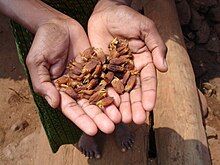Industrial sector
Steel sector
The steel industry is one of the biggest heavy industries of Chhattisgarh. Bhilai Steel Plant, Bhilai operated by SAIL, with a capacity of 5.4 million tonnes per year, is regarded as a significant growth indicator of the state. More than 100 steel rolling mills, 90 sponge iron plants and ferro-alloy units are in Chhattisgarh. Along with Bhilai, today Raipur, Bilaspur, Korba and Raigarh have become the steel hub of Chhattisgarh. Today, Raipur has become the center of the steel sector, the biggest market for steel in India.Power sector
Chhattisgarh is one of the few states of India where the power sector is effectively developed. Based on the current production of surplus electric power, the position of the State is comfortable and profitable. The Chhattisgarh State Electricity Board (CSEB) is in a strong position to meet the electricity requirement of the new state and is in good financial health. Chhattisgarh provides electricity to several other states because of surplus production and its power hubs are Korba and Bilaspur.In Chhattisgarh, NTPC has a thermal plant with the capacity of 2100 MW at Sipat, Bilaspur, while CSEB's units have a thermal capacity of 1240 MW and hydel capacity of 130 MW. Apart from NTPC and CSEB, there are a number of private generation units of large and small capacity. The state government has pursued a liberal policy with regard to captive generation which has resulted in a number of private players coming up.
As per a study made by the Power Finance Corporation Ltd., New Delhi, the state has potential of 61000 MW of additional thermal power in terms of availability of coal for more than 100 years and more than 2500 MW hydel capacity. To use this vast potential, substantial additions to the existing generation capacity are already under way.
Aluminium sector
The aluminium industry of Chhattisgarh was established by Bharat Aluminum Company Limited, which has a capacity of around one million tonnes each year.Natural resources
Forest
Forests occupy 41.33% of the total area (as per the latest report by the Indian Forest Service) and the rich forest resources include wood, tendu leaves, honey and lac.
Mahua
Forest Ventilago in Biodiversity Rich Chhattisgarh Forest

Mineral deposits
Chhattisgarh is rich in minerals. It produces 20% of the country's total cement produce. It ranks first in the nation for coal production and second in reserves, third in iron ore production and first in tin production. Limestone, dolomite and bauxite are abundant. It is the only tin-ore producing state in the country. Other minerals include corandum, garnet, quartz, marble, alexandrite and diamonds.
Maikal Hills in Chhattisgarh
Mineral Wealth from Chandidongri, Chhattisgarh








